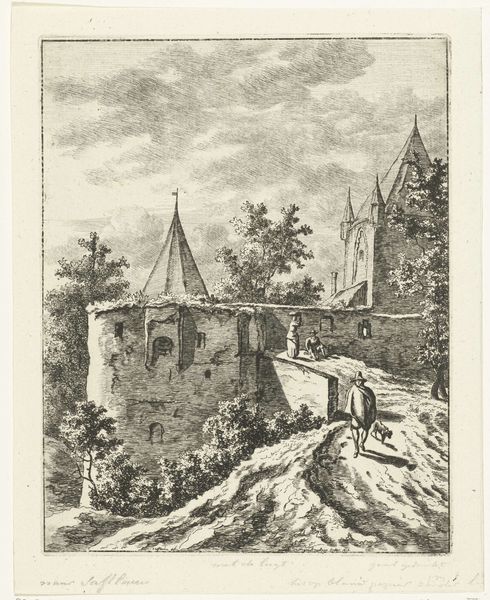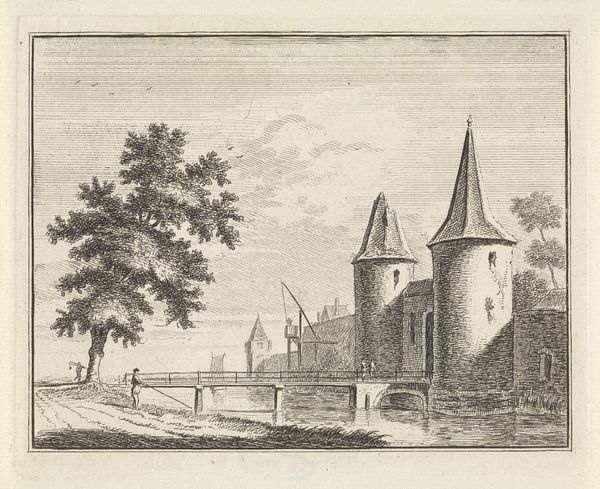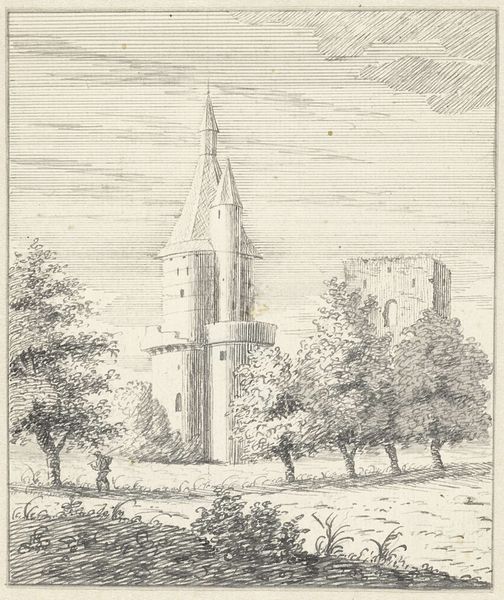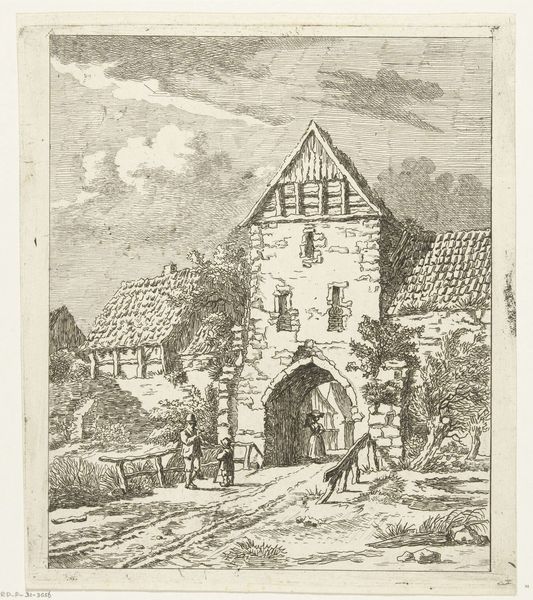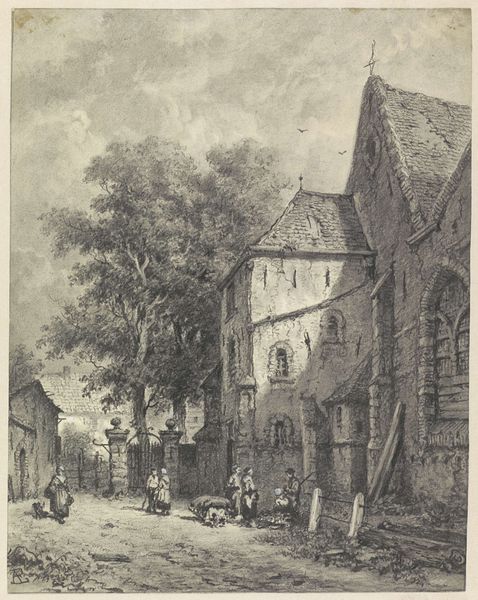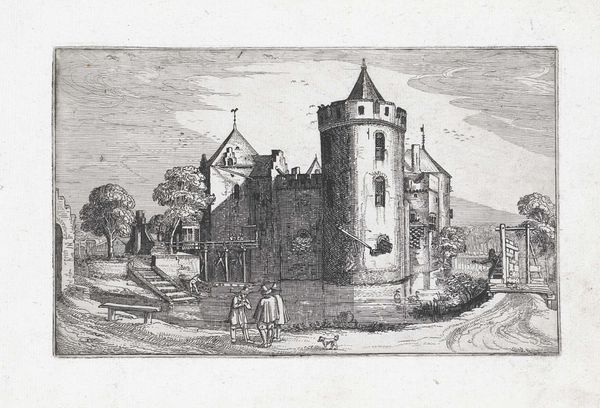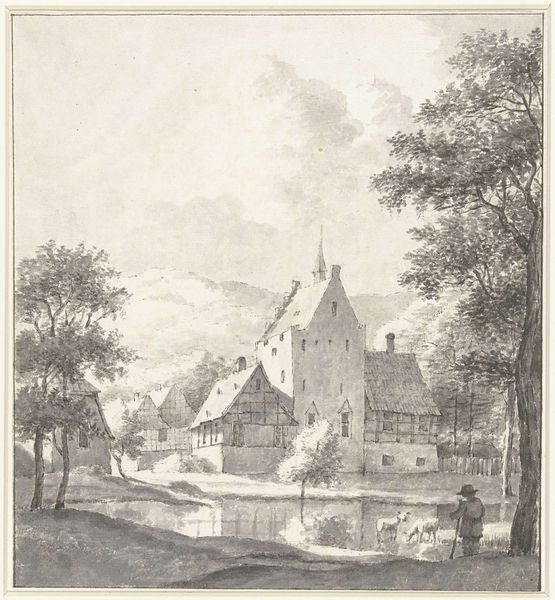
print, engraving
# print
#
old engraving style
#
landscape
#
romanticism
#
history-painting
#
engraving
Dimensions: height 205 mm, width 163 mm
Copyright: Rijks Museum: Open Domain
Editor: Here we have Ernst Willem Jan Bagelaar’s “Gezicht op de Gruitpoort te Doetinchem,” an engraving, dating sometime between 1798 and 1837. It gives me a sense of looking back, a nostalgic and almost romantic feeling with the aged architecture. What do you see in this piece? Curator: I'm immediately struck by how this image reflects the rising tide of nationalism in the 19th century. You have the ruins – symbols of a glorious past – presented not as markers of decay, but as potent reminders of a shared cultural identity. The Gruitpoort, though crumbling, stands defiant. Editor: So it’s not just a pretty picture, it's making a statement? Curator: Precisely! Ask yourself: who controlled the narrative around these images? Were these engravings commissioned to foster local pride, or to perhaps remind people of a powerful feudal past? Note how the lone figure by the road appears insignificant compared to the gate; what does that suggest about individual versus the collective history? Editor: That's really interesting, I hadn’t considered the political implications of what is basically a landscape print. It speaks to how these seemingly innocent artworks can actually carry quite a loaded message, almost like visual propaganda in a way. Curator: Exactly. It’s a valuable lesson on how the cultural elite use visual media to shape public consciousness. Did Bagelaar aim to showcase the city's proud history, or were other socio-political motivations at play here, maybe glorifying the past to contrast a perceived decay of the present? Editor: This has totally changed how I look at the engraving; now it's more than just a pretty picture. It's history etched in ink. Curator: Indeed! Understanding art as a product of social forces opens up richer perspectives.
Comments
No comments
Be the first to comment and join the conversation on the ultimate creative platform.
